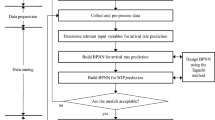Abstract
Assembly Line Balance (ALB) problem is a typical combinatorial optimization problem where pieces of work are transported between the work stations. In the ALB problem, the ultimate goal is to seek the optimal makespan. It is a very difficult problem to solve particularly in Sewn Product Industry (SPI) which is a labor-intensive manufacturing industry. In order to achieve the optimal makespan, it is necessary to take into account factors such as the efficiency of each machinist, the allocation of suitable Work In Progress (WIP) into each assembly line, the calculation of each product production time in terms of Sewing Minute Value (SMV) and the assignment of each machinist into different work stations according to his/her capability. However, the current methodologies are dependent on human experts relying on statistical data. These data, however, are problematic in that they are historical data and as such are unlikely to be suitable for all circumstances especially as in a highly competitive industry such as the SPI practices, standards and tasks are constantly changing and adapting. In this paper, two models have been proposed to solve the WIP allocation problem and the SMV calculation problem. The preliminary results are encouraging. The first model is able to extract a large number of the rules and has attained a prediction accuracy of 93%. The second model can increase 11% in accuracy in predicting the SMV compared to the current widely used General Sewing Data (GSD) method.
Similar content being viewed by others
References
Fan, T.-G., Wang, S.-T., & Chen, J.-M. (2006). Generating weighted fuzzy production rules using neural networks. In Proceedings of the fifth international conference on machine learning and cybernetics, Dalian, China 16 Aug, IEEE, (pp. 3059–3062).
Fozzard G., Spragg J., Tyler D. (1996) Simulation of flow lines in clothing manufacture-part I: Model construction. Institute Journal Clothing Science Technology 8(4): 17–27
General Sewing Data Student Manual, Methods Workshop Limited (1992)
Huang, D.-M., Ha, M.-H., Li, X.-F., Tsang, E. C. C. & Li, Y. -M. (2005). Learning of weighted fuzzy production rules based on fuzzy neural network. In Proceedings of the fourth international conference on machine learning and cybernetics, Gangzhou, China 21 Aug, IEEE (pp. 2901–2906).
Joseph, J., & La Viola, Jr. (2003). A comparison of unscented and extended Kalman filtering for estimating quaternion motion. In Proceedings of the American control conference, Denver, Colorado June 6 (pp. 2435–2440).
Lai, L., & Liu, J. (2008a). WIPA: A neural network and CBR-based model for allocating work in progress. In Proceedings of the 5th international conference on information technology and applications (ICITA 2008), Cairns Queensland Australia, 23–26 June 2008 (pp. 533–538).
Lai, L., & Liu, J. (2008b). ALBO: An assembly line balance optimization model using ant colony optimization. In Proceedings of the 22nd international conference on industrial engineering and other applications of applied intelligent systems.
Li B., Song X. (2006) Improved ant colony algorithm with pheromone mutation and its applications in flow-shop problems. School of Computer and Automatic Control Hebei Polytechnic University, Tangshan, China
Majumdar A., Majumdar P. K., Sarkar B. (2006) An investigation on yarn engineering using artificial neural networks. Textile Institute 97(5): 429–434
Ounar, F., & Pujo, P. (2009). Pull control for job shop: Holonic manufacturing system approach using multicriteria decision-making. Journal of Intelligent Manufacturing, doi:10.1007/s10845-009-0288-4 (published on line 9).
Ramachandram D., Rajeswari M. (2004) Neural network-based robot visual positioning for intelligent assembly. Journal of Intelligent Manufacturing 15: 219–231
Ren, R., Zhu, S.-H., Luo, Y.-Q., Ren, D.-N., & Zeng, E.-L. (2005). Nonlinear signals separation of adaptive natural gradient learning. In Proceedings of the fourth international conference on machine learning and cybernetics, Gangzhou, China 21 Aug, IEEE (pp. 2771–2776).
Sabuncuoglu I., Erel E., Tanyer M. (2002) Assembly line balancing using genetic algorithms. Journal of Intelligent Manufacturing 11: 295–310
Web site of Clementine software www.spss.com/clementine.
Web site of General Sewing Data www.gsdhq.com.
Yamada, T. & Yabuta, T. (1994). Remarks on neural network controller using different sigmoid functions. IEEE, (pp. 2628–2632).
Author information
Authors and Affiliations
Corresponding author
Rights and permissions
About this article
Cite this article
Lai, L.K.C., Liu, J.N.K. WIPA: neural network and case base reasoning models for allocating work in progress. J Intell Manuf 23, 409–421 (2012). https://doi.org/10.1007/s10845-010-0379-2
Received:
Accepted:
Published:
Issue Date:
DOI: https://doi.org/10.1007/s10845-010-0379-2




